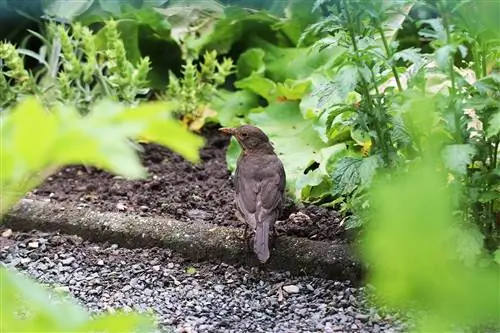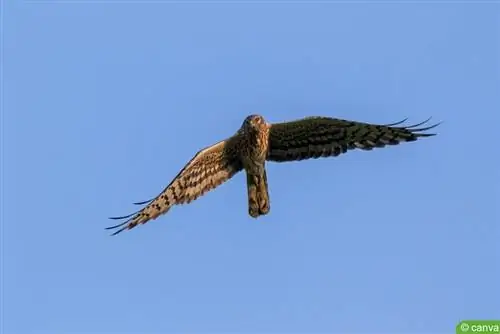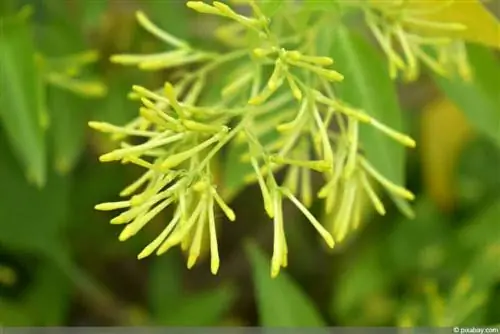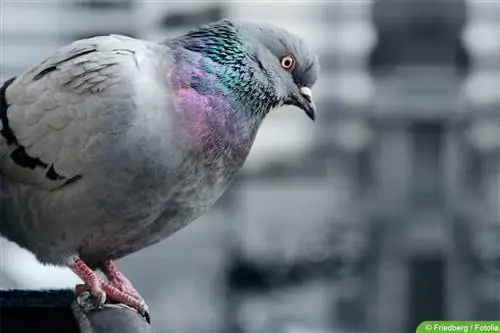- Author admin [email protected].
- Public 2023-12-17 03:39.
- Last modified 2025-01-24 12:45.
Night-time bird song is not uncommon. There are numerous species that sing primarily or partly at night. We introduce you to 10 native bird species that can be heard at night.
Blackbird (Turdus merula)
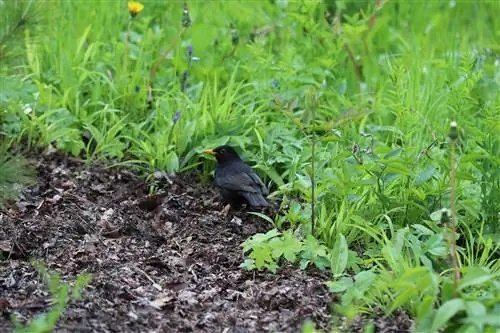
- Synonym: Black Thrush
- Distribution: Europe to Asia Minor and North Africa, in Australia and New Zealand Neozoon
- Singing: some time before dawn, flute-melodic singing with numerous motifs, “tix tix tix” when excited
- Size: 24 to 27 cm
- Wingspan: 38 cm
- Appearance: Female olive brown with dark beak, male black with yellow beak
- Breeding season: March to mid-July
- Habitat: Forests, urban areas (city parks, gardens)
- Food: Earthworms, beetles, butterflies, snails, caterpillars, larvae, berries, seeds
- Train behavior: Partial puller
Field Whorl (Locustella naevia)
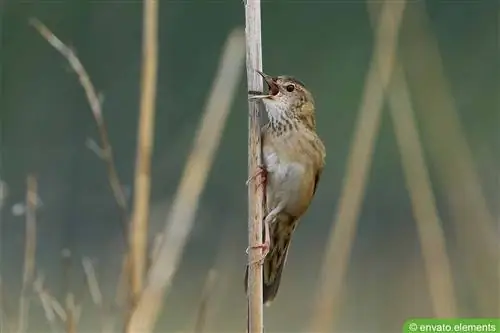
- Synonym: Grasshopper warbler
- Distribution: Western Europe via the Urals to Western Siberia, in Germany not in the Alpine area
- Singing: sings day and night, loud “sirr”, reminiscent of grasshoppers
- Size: 12 to 14 cm
- Wingspan: 14 to 19 cm
- Appearance: brown striped upperside with yellow-white belly, tail wedge-shaped
- Breeding season: mid-May to end of July
- Habitat: Wet and dry areas, requires shrubs and sufficient herb layer
- Food: exclusively arthropods
- Migratory behavior: Long-distance migrants
Redstart (Phoenicurus phoenicurus)
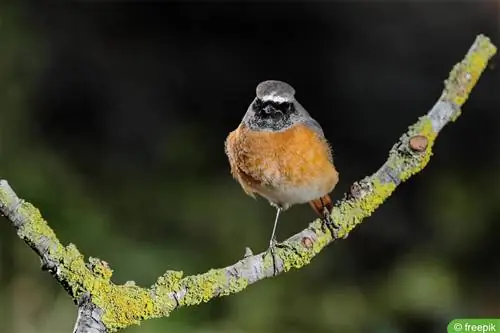
- Distribution: Western to Central Palearctic
- Singing: sings at night and in the morning, gentle “hüit” with increasing intensity, crisp “tick-tick-tick” follows, motifs vary frequently, very melodic
- Size: 13 to 15 cm
- Wingspan: 21 to 24 cm
- Appearance: gray to gray-brown back feathers, males with clearly orange-red colored throat and belly area, as well as black throat, females with white-beige chest, both sexes have red tail feathers
- Breeding season: Mid-May to July
- Habitat: Pine forests, mixed forests, deciduous forests, city parks and natural gardens
- Food: Berries, seeds, larvae, spiders, insects
- Migratory behavior: Long-distance migrants
Note:
The black redstart (Phoenicurus ochruros) is similar to the common redstart in appearance and behavior. The biggest difference is the song, as black redstarts primarily emit a grinding “jirr tititi” at short intervals and with little melody.
Blackcap (Sylvia atricapilla)
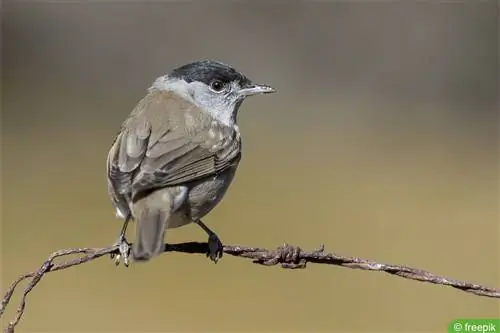
- Distribution: Europe, not in northern Scandinavia, Iceland and the northern British Isles
- Singing: late at night until just before dawn, melodic fluting with increasing volume, motifs often change, when excited a clicking “tak” is heard
- Size: 13 to 15 cm
- Wingspan: 23 cm
- Appearance: gray-brown upper plumage, light gray belly, black pointed bill, red-brown head plate in females, black in males
- Breeding season: April to mid-July
- Habitat: light forest areas, riparian forests, preferably shrubs and undergrowth, city parks, gardens, cemeteries
- Food: Spiders, insects, berries
- Migratory behavior: Long-distance migrants
Nightingale (Luscinia megarhynchos)
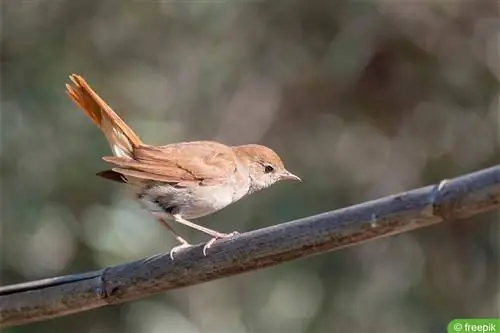
- Distribution: Western Europe to Mongolia, North Africa, not in Northern and Eastern Europe
- Singing: singing exclusively at night, up to 260 different verse variations, extremely detailed, voluminous, melodious, local songbird with the most beautiful singing
- Size: 15 to 16.5 cm
- Wingspan: 22 to 26 cm
- Appearance: Top and tail feathers in light reddish brown, underside white to light gray, white eye rim, yellow pink beak
- Breeding season: May to end of June
- Habitat: Scrub forests, forest edges, wetlands
- Food: Insects, larvae, caterpillars, worms, spiders, berries (primarily over summer)
- Migratory behavior: Long-distance migrants
Robin (Erithacus rubecula)
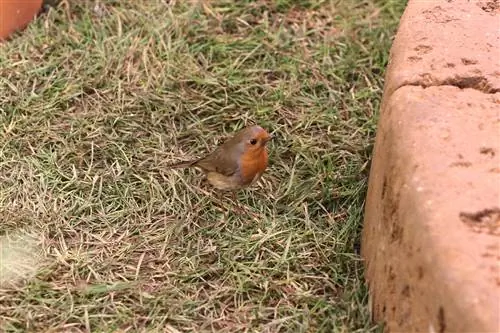
- Distribution: western Palearctic to North Africa and Asia Minor
- Singing: sings at night about an hour before dawn, characteristic “ticking” and “snickering” from quick successive “zik” variations, stretching to trilling, varied
- Size: 13.5 to 14 cm
- Wingspan: 20 to 22 cm
- Appearance: brown upperparts, distinctive orange-red breast and throat, dark bill, black wing tips
- Breeding season: Early April to mid-July
- Habitat: Forests with sufficient moisture, shrubs, urban areas
- Food: Insects, berries, fruits
- Migratory behavior: Resident bird, partial migrant in the north
Song Thrush (Turdus philomelos)
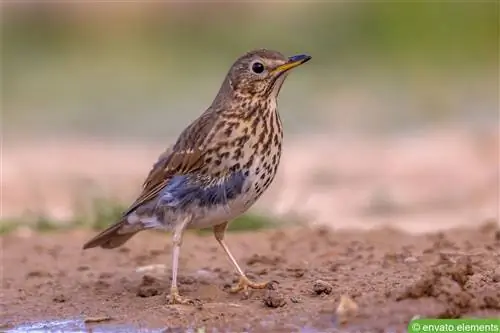
- Distribution: Western and Central Palearctic to Lake Baikal, in Australia and New Zealand Neozoon
- Singing: sings throughout the day, loud voice with varied motifs, repeats them often, most often the pleasant-sounding “tülip tülip tülip” or clearly defined “didi didi didi”
- Size: 20 to 22 cm, male slightly larger
- Wingspan: 36 cm
- Appearance: brown upper side, white underside with clearly visible wedge spots, black beak
- Breeding season: March to early August
- Habitat: Deciduous forests, mixed forests, coniferous forests, gardens, city parks
- Food: Earthworms, insects, snails, berries, seeds
- Migratory behavior: Short-distance migrants
Note:
In addition to their singing, song thrushes can also be recognized by their so-called “thrush forges”. These are places where snail shells have been broken open by the song thrushes in order to get to the snails.
Swamp Warbler (Acrocephalus palustris)
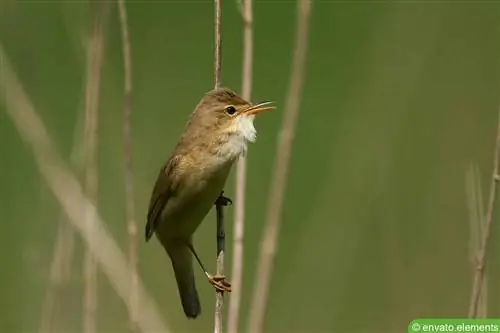
- Distribution: Western Palearctic
- Singing: sings at night or at the end of dusk, high and rhythmic voice, trilling “prrri-prrri-prü-prri” in quick succession, intense “ti-Zäääh, ti -Zäääh", often imitates the songs and calls of other bird species
- Size: 13 cm
- Wingspan: 16 to 21 cm
- Appearance: grey-brown upper side with green accents, white-yellow underside, brown and short beak
- Breeding season: May to mid-July
- Habitat: always near bodies of water and wetlands, sufficient plant cover necessary
- Food: Snails, insects, spiders, berries
- Migratory behavior: Long-distance migrants
Note:
In addition to the reed warblers, you can also hear the night heron (Nycticorax nycticorax) at night. Night herons do not sing, but are noticeable due to their clearly audible croaking, which is somewhat reminiscent of frogs.
Wren (Troglodytes troglodytes)
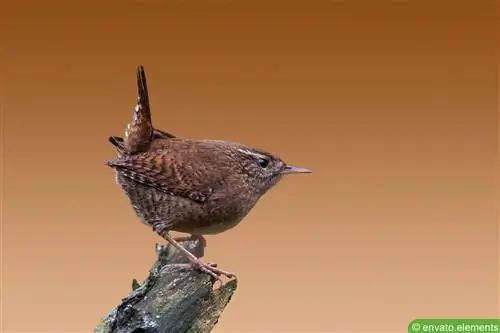
- Synonym: Snow King
- Distribution: Europe to East Asia, up to 4,000 m altitude, North Africa, absent in northern Russia and Fennoscandia,
- Singing: singing day and night, volume up to 90 dB, blaring trills and chirping in over 130 variations, when excited you hear a loud “drrr”
- Size: 8 to 12 cm
- Wingspan: 13 to 15 cm
- Appearance: light brown upper and lower sides, lightly banded with a line above the eyes, light throat, pointed beak
- Breeding season: April to mid-July
- Habitat: primarily in undergrowth, deciduous forests, mixed forests, gardens, parks, areas with bushes, walls, openings in building structures
- Food: Beetles, spiders, insects, seeds
- Train behavior: Partial puller
Goatjar (Caprimulgus europaeus)
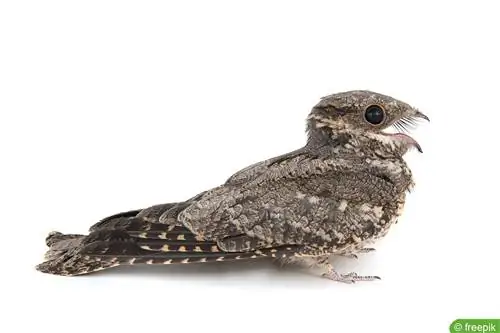
- Synonym: European Nightjar, Nightjar
- Distribution: Europe via Asia to Lake Baikal, North Africa
- Singing: at night or during twilight, rasping “eeerrrörrr” in varying swelling intensity, loud, reminiscent of a vehicle
- Size: 24 to 28 cm
- Wingspan: 50 to 60 cm
- Appearance: What is striking is the large beak (cutter), top and bottom patterned in brown, white and black, serves as camouflage on trees, long tail feathers, females are different only by white chin spot
- Breeding season: May to mid-August
- Habitat: primarily open landscapes, also pine forests, moors, heathland, sandy soils preferred
- Food: Butterflies, flying beetles and other flying insects
- Migratory behavior: Long-distance migrants, night migrants
Owls & Co
You can also hear the local owls at night, but they don't sing. They include theLong-eared Owl(Asio otus), theTawny Owl(Strix aluco),Uhu(Bubo bubo),Little Owl(Athene noctua),Barn Owl(Aegolius funereus) and theBarn Owl (Tyto alba).

